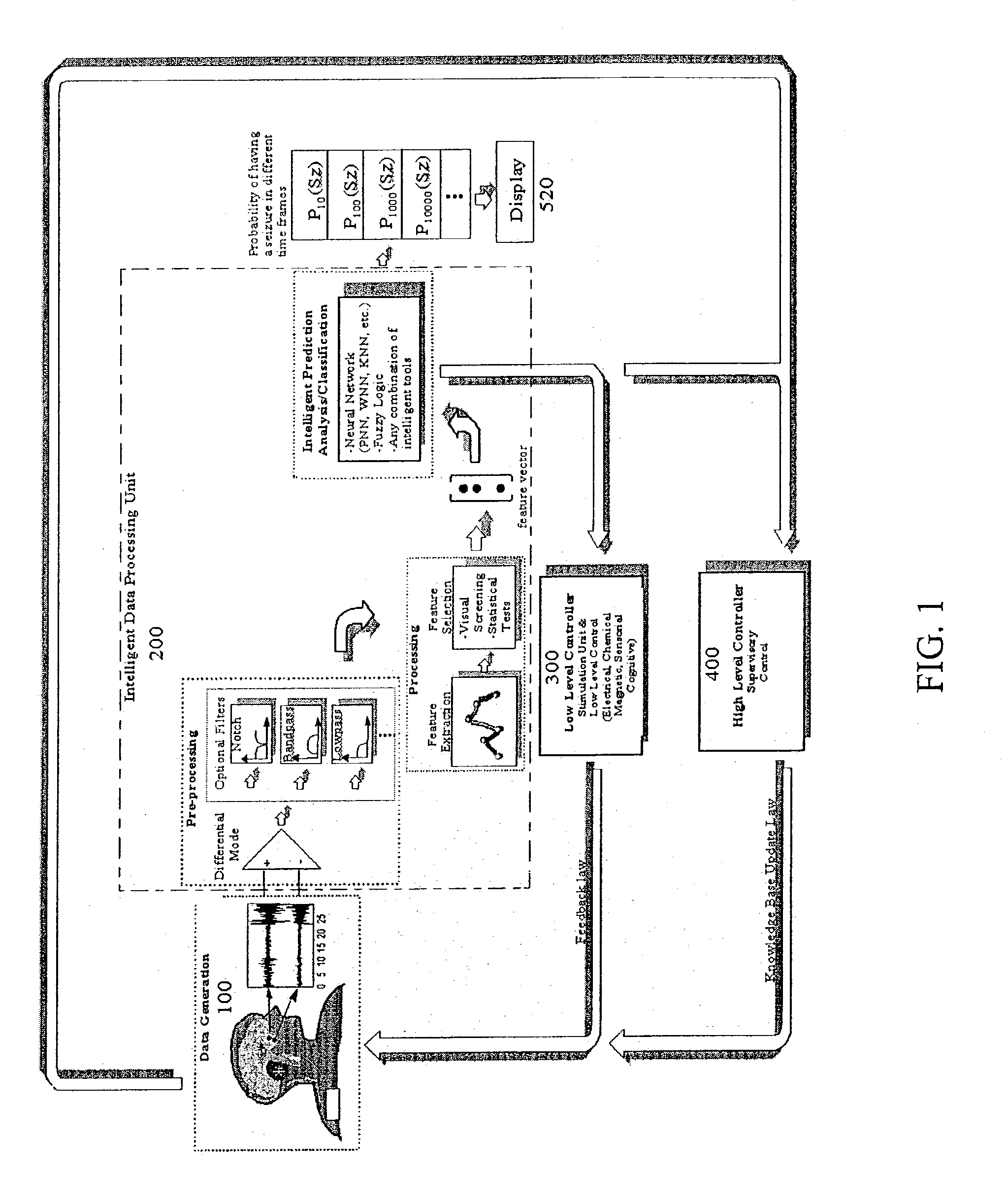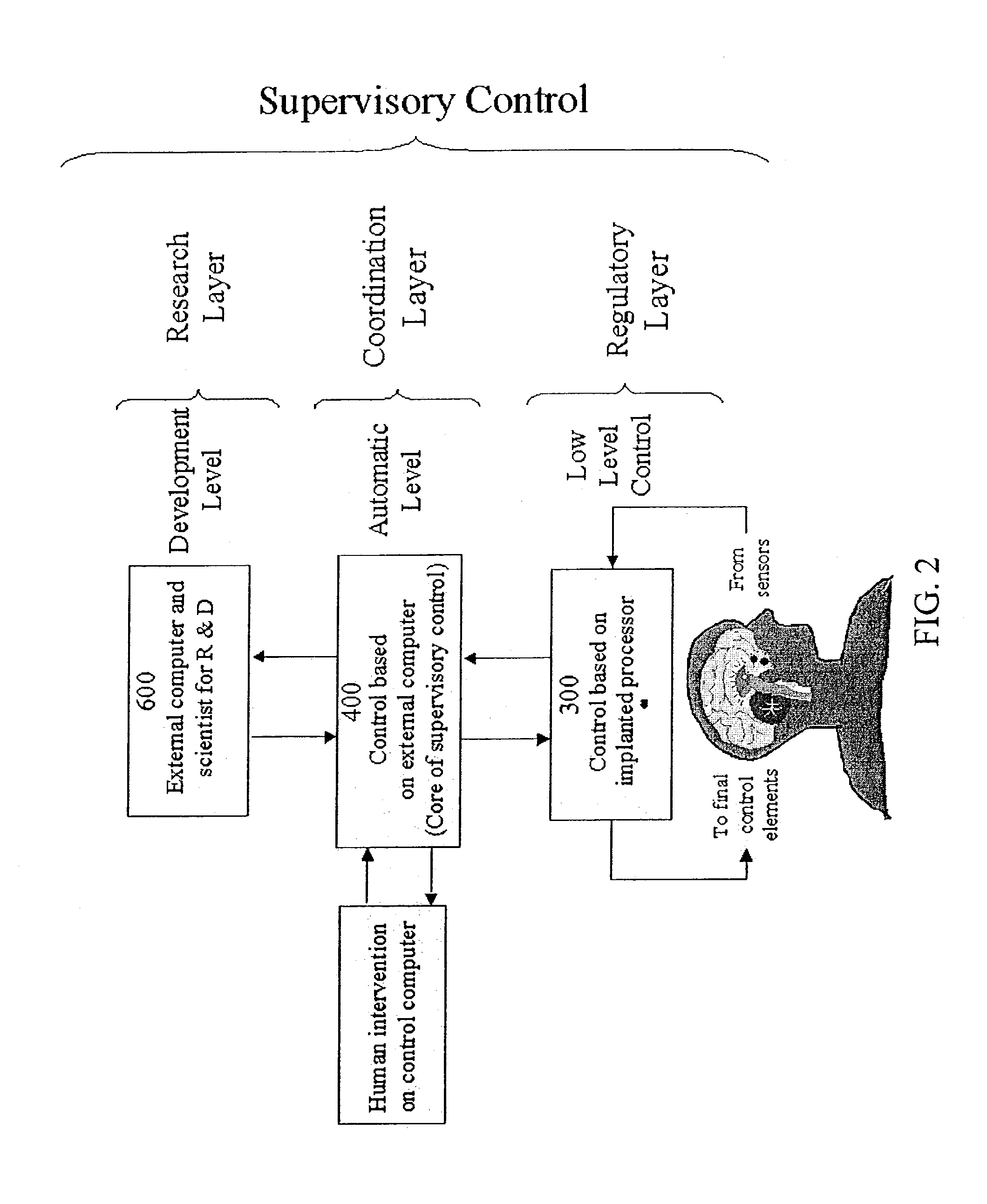Adaptive method and apparatus for forecasting and controlling neurological disturbances under a multi-level control
a multi-level control and adaptive method technology, applied in the field of neurological disturbance prediction and control, can solve the problems of lack of reliable, significant disability of individuals with epilepsy, job loss, etc., to prevent or avoid seizures, avoid injuries, and improve understanding
- Summary
- Abstract
- Description
- Claims
- Application Information
AI Technical Summary
Benefits of technology
Problems solved by technology
Method used
Image
Examples
Embodiment Construction
[0059]The preferred embodiment of the invention uses brain electrical signals or other input signals and an implanted processor to predict and provide early detection of the electrographic onsets of brain events such as seizures in an on-line intelligent arrangement that facilitates a wide variety of options. FIG. 1 is an overview of the overall system architecture from the data input to the output signal indicating the probability of having a brain disturbance or seizure, and to the closed-loop controls included in the system. The data is sketched as brain electrical activity, but it is not restricted to this type of activity; it can also include chemical, magnetic, temperature, blood pressure, and / or any other physiological variable that can contain relevant information for prediction and early detection of the seizure onset. In FIG. 1, the main system blocks can be visualized starting at the data generation block 100, then the intelligent data processing unit 200 which is a key p...
PUM
 Login to View More
Login to View More Abstract
Description
Claims
Application Information
 Login to View More
Login to View More - R&D
- Intellectual Property
- Life Sciences
- Materials
- Tech Scout
- Unparalleled Data Quality
- Higher Quality Content
- 60% Fewer Hallucinations
Browse by: Latest US Patents, China's latest patents, Technical Efficacy Thesaurus, Application Domain, Technology Topic, Popular Technical Reports.
© 2025 PatSnap. All rights reserved.Legal|Privacy policy|Modern Slavery Act Transparency Statement|Sitemap|About US| Contact US: help@patsnap.com



